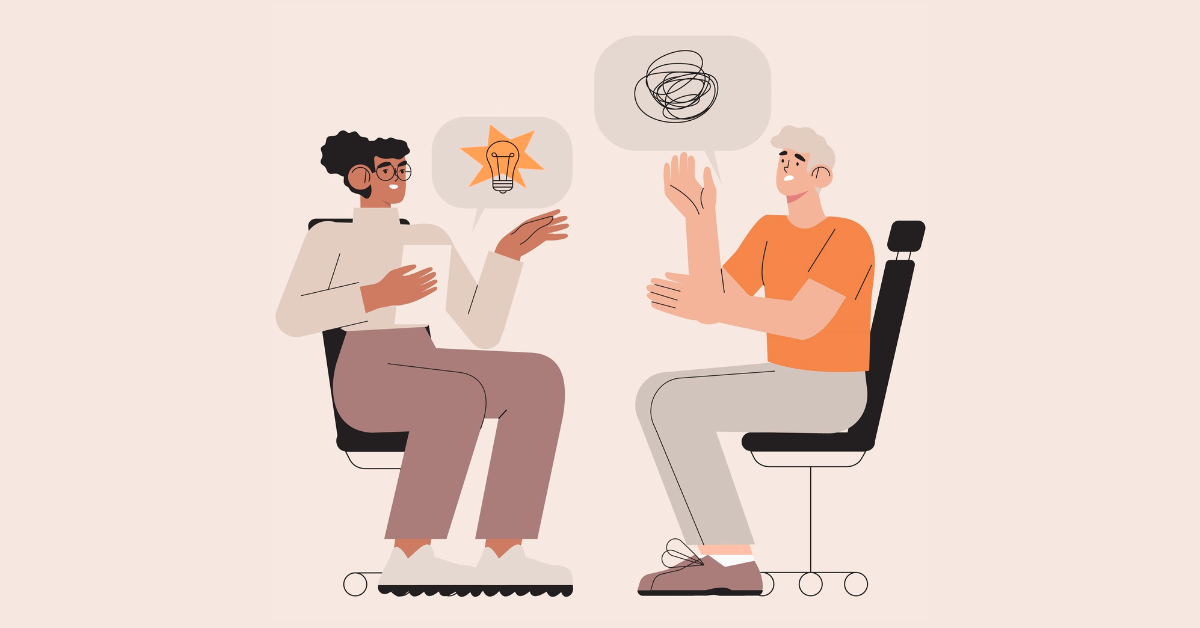|
Engage meaningfully and gain insight that will support both your instruction and students' growth.
Throughout my work as a teacher and a coach, I’ve come across many different interpretations and definitions of what it means to conference with students. At a minimum, conferences are 1-1 interactions between a teacher and a student. At best, they are highly meaningful and informative conversations. They are opportunities to get to know a student, to assess where they are and where they are going, and to provide highly customized instruction aimed at advancing their learning. As Don Murray explains in his book A Writer Teaches Writing:
“Conferences are not mini-lectures, but the working talk of fellow writers sharing their experience with the writing process. At times, of course, they will be teacher and student, master and apprentice, if you want, but most of the time, they will be remarkably close to peers, because each writer, no matter how experienced, begins with each draft.” How can we maximize our conferences with our students?
Defining roles
When it comes to conferencing, I have always leaned on Carl Anderson’s book, How's It Going? He explains that conferencing has a two-part structure: it’s first a conversation about the work the student is doing, and then a conversation about how the student can get better. As part of these conversations, the teacher and the student have distinct roles that help ensure they are meaningful and productive. Anderson explains:
When the teacher and student enact these roles, the conference becomes a true conversation, whereby the teacher and the student become equal contributors, dedicated to the larger goal of improving the learning.
Facilitating the conversation
In addition to establishing roles, Anderson offers what I think is a helpful structure to facilitate a conference. The structure, which consists of six parts, can also benefit from the use of meaningful facilitation questions that will help guide your conversation.
Launch the conversation
The goal of the launch is to ask: how’s it going? What are you working on today? What do you need help with? This allows the student to take the lead.
Look at/assess student work
It is so important to look at the work of our students in efforts of being able to analyze what they have shared, what is showing up in the work, and how the two compare. This kind of analysis is necessary if we are going to be able to accurately assess where students are and where they need to go.
Decide what to teach
This part of the conference is definitely the most challenging intellectual work. We need to decide what and how to teach during this particular conference. What helps me is to identify what I think is the most high-leverage area, the most urgent need, and not rely on a fix-it-all approach. To help with the decision we can consider things like:
In terms of how to teach a specific strategy or skill, Anderson offers some helpful tips:
Nudge students to have a go
After our teaching, Anderson recommends that we nudge our students to try it out! I appreciate this terminology because it supports the idea that we encourage them to put forth an initial attempt to talk through what they are going to do during the conference, while they have our support. This helps us assess their understanding of the conference, and what they will go do on their own.
Link the conference and stamp the learning
To promote the transfer of skills and strategies, we want to link the conference to students’ ongoing work and encourage them to do the work we’ve discussed right away. As Anderson states, we can ask things like: “What are you going to do now?” or “Tell me your plans for your work…” I like to think of this as stamping the learning.
Post-conference work
The last part of the conference, while it can often feel tedious, is crucial. As educators of high numbers of students, we can’t possibly remember every conversation we’ve had with each individual. Each student is unique and has different strengths and struggles depending on the content, the topic, the genre, etc. I highly encourage the teachers I coach to identify a method of keeping conference notes that works for them, and something they can maintain throughout the semester (and ideally the larger school year). In my own work, I used folders and index cards and titled them by the unit of study. Other teachers I know use voice notes/memos, while others have used Google Drive where they created one Drive for the overall unit, and created a folder for each student. Keeping notes and records helps us cater our instruction, monitor progress, and celebrate growth.
Whereas any 1-1 interactions with students are valuable, finding ways to maximize our conferencing techniques such as those mentioned above can be transformative for us as educators. It can be challenging to find the time to conference amidst all that we do, but these highly essential and enlightening conversations can help us get to know our students on a deeper level. When we really know our students, we can most effectively cater our instruction and meet them where they are, which gives us the best chance at truly advancing their learning.
|
|
The Center for Professional Education of Teachers (CPET) at Teachers College, Columbia University is committed to making excellent and equitable education accessible worldwide. CPET unites theory and practice to promote transformational change. We design innovative projects, cultivate sustainable partnerships, and conduct research through direct and online services to youth and educators. Grounded in adult learning theories, our six core principles structure our customized approach and expand the capacities of educators around the world.
|
ABOUT US
525 West 120th Street, Box 182 New York, NY 10027 416 Zankel Ph: (212) 678-3161 [email protected] Our Team Career Opportunities |
RESOURCES
Professional Articles Ready-to-Use Resources Teaching Today Podcast Upcoming PD Opportunities |
COACHING SERVICES
Custom Coaching Global Learning Alliance Literacy Unbound New Teacher Network Student Press Initiative |
































